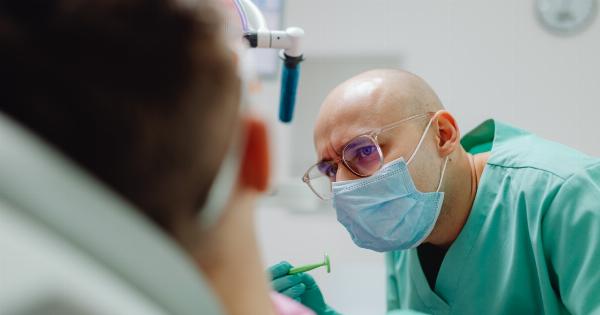The bladder is a vital organ in the human body responsible for storing and releasing urine. However, certain medical conditions or accidents can lead to bladder dysfunction, causing inconvenience and discomfort for individuals.
Over the years, medical advancements have provided various treatment options to manage bladder issues, but a breakthrough option known as the aspirational bladder has revolutionized the field of urology.
Understanding the Bladder
Before delving into the concept of the aspirational bladder, it is essential to understand the functioning of the bladder. The bladder is a hollow organ located in the lower abdomen and is composed of muscles and connective tissues.
Its main function is to store urine produced by the kidneys and release it when appropriate.
Types of Bladder Dysfunction
Bladder dysfunction can manifest in several ways, including:.
1. Urinary Incontinence
Urinary incontinence refers to the involuntary leakage of urine. This condition can be caused by weak bladder muscles, nerve damage, or hormonal imbalances.
2. Overactive Bladder
An overactive bladder is characterized by a frequent and sudden urge to urinate. The bladder muscles contract uncontrollably, leading to urgency and even urinary incontinence.
3. Bladder Control Problems in Men
In men, bladder control issues can arise due to an enlarged prostate gland, which can obstruct the urethra and affect normal urine flow.
Treatment Options for Bladder Dysfunction
Traditionally, treatment options for bladder dysfunction have included medication, behavioral therapies, and surgical interventions.
However, the aspirational bladder offers a groundbreaking alternative that can significantly improve the lives of individuals with bladder issues.
What is the Aspirational Bladder?
The aspirational bladder is a minimally invasive procedure that aims to restore bladder function and provide relief to individuals with bladder dysfunction.
It involves the implantation of a small, flexible device within the bladder, which helps regulate urine storage and release.
The Procedure
The aspirational bladder procedure is typically performed under local anesthesia with the guidance of advanced imaging techniques. A small incision is made in the lower abdomen to access the bladder.
The device, composed of biocompatible materials, is then carefully inserted into the bladder.
How Does the Aspirational Bladder Work?
The aspirational bladder device works by mimicking the natural bladder function, enabling controlled urine storage and release. The device incorporates sensors that detect the accumulation of urine within the bladder.
Regulating Urine Release
Once the bladder reaches a predetermined threshold, the device triggers a gentle contraction of the bladder muscles, initiating the urine release process. This mechanism prevents both overactive bladder symptoms and urinary incontinence.
Benefits of the Aspirational Bladder
The aspirational bladder procedure offers numerous advantages over traditional treatment options:.
1. Minimally Invasive
The procedure is minimally invasive, reducing the risk of complications and ensuring a faster recovery compared to more invasive surgical interventions.
2. Improved Quality of Life
By restoring bladder function and controlling urine leakage, the aspirational bladder significantly improves the quality of life for individuals with bladder dysfunction.
It allows them to engage in daily activities without constant worry or inconvenience.
3. Long-Term Solution
While medication and behavioral therapies may provide temporary relief, the aspirational bladder offers a long-term solution with enduring benefits. The device is designed to be durable and can be easily managed by the patient.
4. Customizable and Adaptive
The aspirational bladder device can be customized based on individual needs and adjusted as required. This adaptability ensures optimal bladder control, as well as the ability to accommodate changes in bladder function over time.
Risks and Considerations
As with any medical procedure, there are certain risks and considerations associated with the aspirational bladder:.
1. Infection
There is a slight risk of infection at the incision site or within the bladder. However, appropriate antibiotic prophylaxis and sterile techniques during the procedure minimize this risk.
2. Device Malfunction
In rare cases, the aspirational bladder device may malfunction, leading to inaccurate urine storage or release. However, regular monitoring and follow-up appointments can help identify and resolve any potential issues.
Conclusion
The aspirational bladder represents a breakthrough option in the management of bladder dysfunction. This minimally invasive procedure offers individuals suffering from bladder issues a long-term solution with significant benefits.
By restoring bladder function and providing controlled urine storage and release, the aspirational bladder improves the quality of life for patients, allowing them to regain their independence and confidence in daily activities.





























